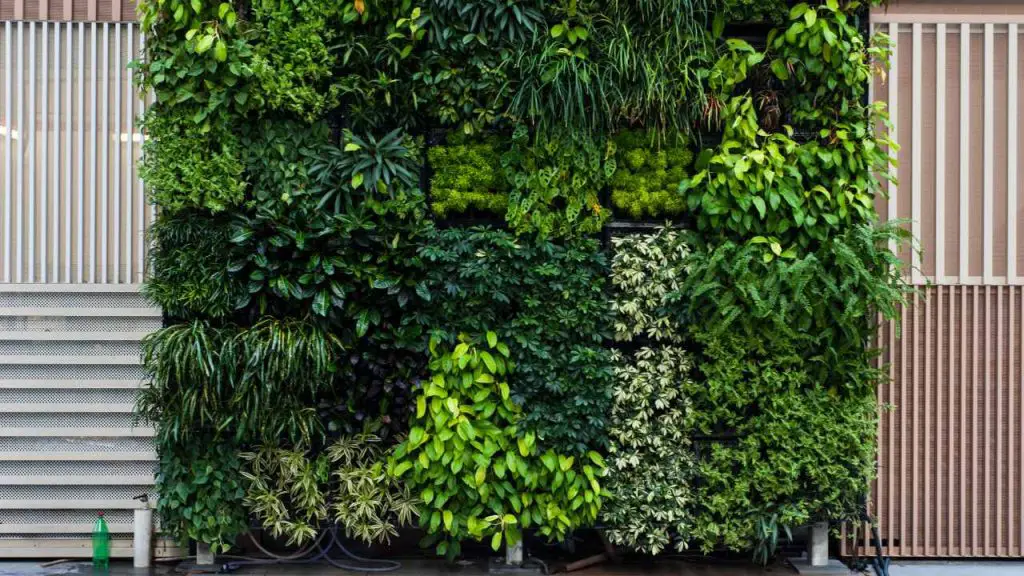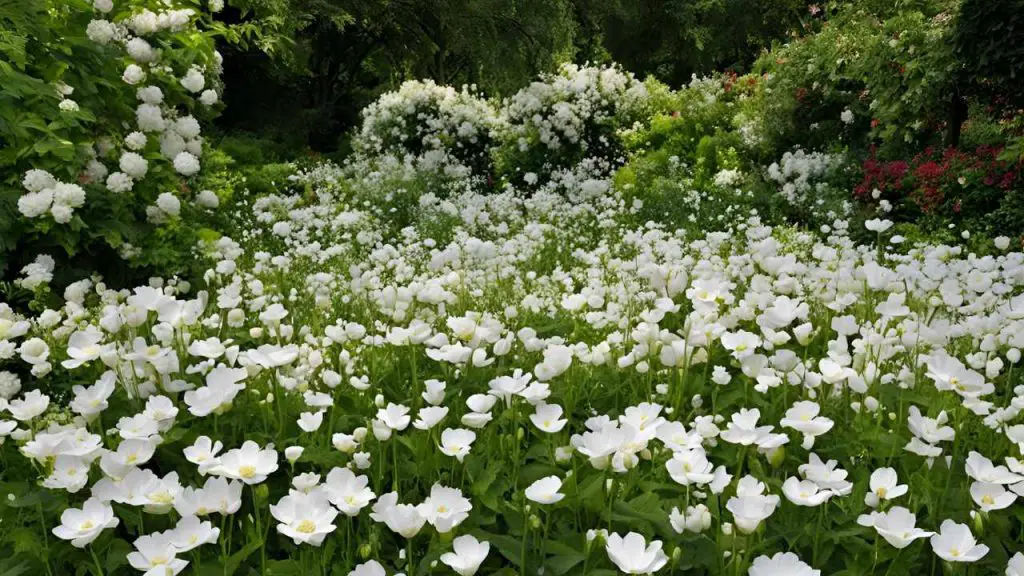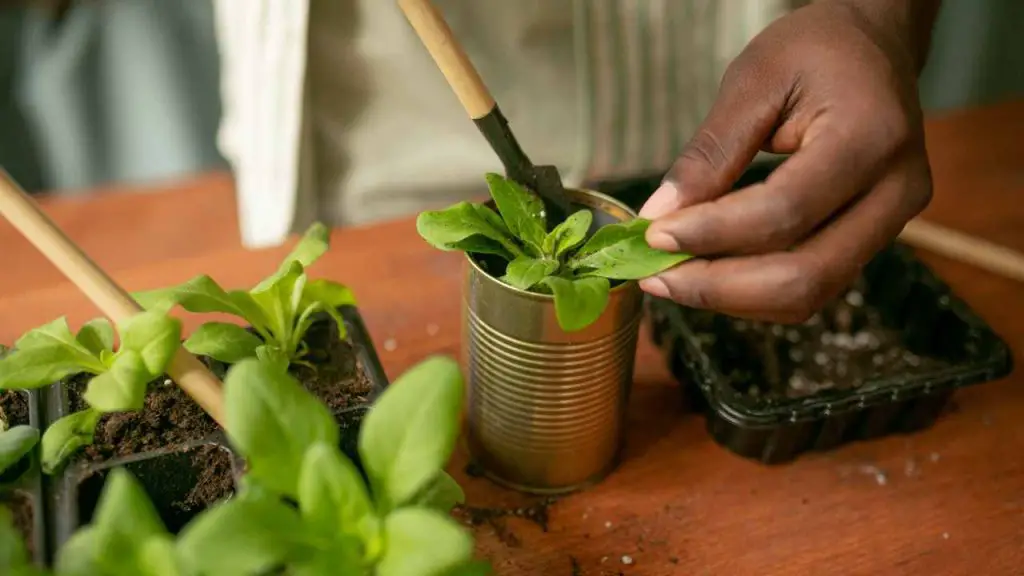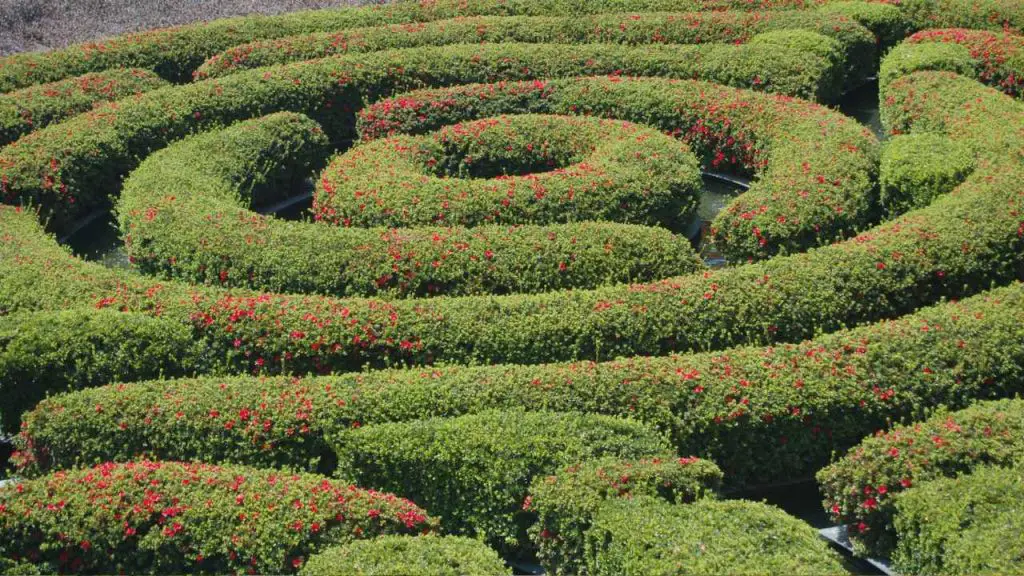Gardening is a fun and creative hobby that brings people closer to nature, makes landscapes look better, and even grows food. Using unusual or “weird” gardening ideas can make your space more fun, interesting, and new.
These creative ideas improve the look of things, make things more efficient, and solve common gardening problems. These unique gardening ideas will inspire and delight you, whether you want to make the most of your space, reuse old things, or add some fun.
1: Upside-Down Gardening

Some people use upside-down gardening to save space by growing plants with their leaves hanging down and their roots hanging above them. This method makes the best use of space, so it’s great for small balcony gardens or gardens in cities.
It also keeps pests away, makes weeding easier, improves air flow, and makes harvesting easier. To be successful, pick the right plants, use good soil, make sure to water enough, and hang containers securely.
This creative method can be a fun and useful way to grow plants in odd places, which makes it a fun and useful way to grow favorite plants.
2: Fairy Gardens

Fairy gardens are miniature landscapes that add magic and wonder to any room. They feature small plants, figurines, and decorations to resemble homes for fairies and other mythical creatures.
These gardens can be grown in various containers or pots, making them ideal for small spaces. The variety of miniature plants allows for lush, varied landscapes. Fairy gardens not only entertain but also help users use their imagination and tell stories, adding a whimsical touch to any space.
3: Vertical Pallet Gardens

Vertical pallet gardens are a creative and space-saving way to grow plants in small or crowded places. They use wooden pallets as a frame to hold soil and plants, and the slats make natural dividers.
The garden has many advantages, such as saving space, being easy to get to, looking nice, and giving you options. Pallets can be changed to fit different rooms by painting, staining, or leaving them natural.
They work especially well for flowers, herbs, and leafy greens, which makes them a useful and creative way to garden in cities.
4: Cinder Block Gardens

A useful and quick way to grow herbs and small plants is in cinder block herb gardens. The hollow centers of cinder blocks are used as planting beds in these gardens, making the design modular and flexible. They are cheap, last a long time, and are easy to keep up.
The blocks can be stacked in different ways, which makes it easy to get to each plant. They can stand up to the weather, are strong, and are easy to keep up. This makes them perfect for urban gardeners and people who want to add something nice to their garden.
5: Living Fences

Living fences, also known as green or natural fences, are eco-friendly alternatives to traditional fences. They are made by growing plants in a dense wall, providing privacy and flexibility.
These fences can be made from various plants like shrubs, trees, vines, and hedges, and offer benefits like privacy, aesthetics, environmental protection, adaptability, and heat insulation.
The choice of plants, space, layout, upkeep, and legal issues are crucial. Living fences define spaces, provide privacy, and enhance the landscape, while also growing and changing over time, adding to the ever-changing beauty of the outdoors.
6: Glow in the Dark Pathways

Glow-in-the-dark paths are a unique and ethereal way to create a magical and ethereal garden environment. They absorb sunlight during the day and emit a soft glow at night, creating a mysterious atmosphere.
These paths are safer due to their energy efficiency and can be used to define garden beds, highlight fountains or statues, or mix with other lighting.
To create these paths, choose high-quality materials, plan the layout, add them to existing paths, avoid excessive use, and pair them with other outdoor lighting.
7: Moss Graffiti

Moss graffiti is an artistic and eco-friendly way to decorate surfaces with living art. It has a paste that is made from live moss, which forms natural, green patterns over time as it grows on surfaces.
This method helps improve the air quality, looks nice, and doesn’t need much upkeep. To make moss graffiti, you need to gather the right tools, mix the ingredients, pick a surface, apply the paste, and watch it grow.
Moss graffiti can be used for art projects with the community and to raise awareness about the environment.
8: Shoe Planters

A creative and eco-friendly way to use old shoes as garden containers is to turn them into shoe planters. Adding a fun and unique touch to garden displays, they also make growing plants in a charming and unusual way possible.
To do this, you need to choose sturdy shoes, clean them well, make sure they drain well, fill them with potting soil, choose the right plants, and put them in the right place. Shoe planters are a fun and unique way to decorate your garden.
9: Birdhouse Planters

Birdhouse planters are a cute garden feature that can be used for two different things: they provide a home for birds and a pretty place to plant flowers, herbs, or small plants.
They make your garden look more fun and attractive to birds at the same time. If you want to make a birdhouse planter, you’ll need to find a birdhouse that has good drainage, clear out space for the planter, line the inside with landscape fabric, choose plants, plant them, and tie it down.
10: Tire Swing Planters

Tire swing planters are a unique and eco-friendly way to use old tires as planters in your garden. They can be hung from trees or other supports to make hanging planters, or they can be put together vertically to make beds with different levels.
Tires last a long time because they are very strong and can handle all kinds of weather. They have a unique look and take up little room, which makes them perfect for small gardens or places in cities.
Clean the tires, cut or change them, drill holes, paint or decorate them, set them up, and water and fertilize them often to make tire swing planters.
11: Kitchen Colander Hanging Baskets

Hanging baskets made from kitchen colanders are a fun and eco-friendly way to transform old colanders into garden planters. The perforated design allows water to drain well and adds a rustic look.
Ideal for vertical gardens and small spaces, these baskets require washing, painting, lining, and hanging, filling with soil, planting, arranging, hanging, and ensuring stability. They are eco-friendly and easy to access.
12: Bottle Tower Gardens

Bottle tower gardens are an eco-friendly way to garden because they use recycled plastic bottles to make vertical growing areas. They work great in small areas and cities where there aren’t many traditional gardening options.
The steps are to collect bottles, clean them, put the tower together, fill the bottles with soil, plant appropriate plants, and take care of them. The bottle tower gardens save space, recycle, let you make them your own, and look nice. But they need to be maintained regularly and have good drainage.
13: Sink Gardens

Sink gardens are a fun and useful way to turn old sinks into planters or water features. They include choosing a clean sink, getting it ready to use, adding drainage holes, lining it with fabric, filling it with soil, planting plants, and taking care of the garden.
You can also make a sink water feature by putting in a pump, adding water and decorative elements, and then taking care of the water feature.
Recycling, being unique, being flexible, saving space, lasting a long time, having good drainage, and choosing the right plants are all benefits of sink gardens.
14: Living Walls

Living walls, which are also called green walls or vertical gardens, are creative ways to garden in which plants grow up and down on walls or panels.
They save space, look nice, and are good for the environment because they improve air quality, lower heat island effects, and support biodiversity.
But maintenance includes watering, pruning, and checking on the health of the plant on a regular basis. Installation can be hard, and it may need a lot of setup work and structural support.
Living walls can be used both inside and outside to bring nature into everyday spaces and add greenery to cities.
15: Repurposed Furniture Gardens

In repurposed furniture gardens, old or unused furniture is turned into planters or other garden features that can be used. This method combines recycling and gardening, encouraging creative design, sustainability, smart use of space, and unique looks.
Dressers, chairs, tables, bathtubs, and other furniture are some examples. A successful garden needs to drain well, be clean, and have strong structures. This creative and eco-friendly way to use recycled materials in garden design is a one-of-a-kind touch.
16: Planting a Moon Garden

A moon garden is a peaceful and beautiful place with plants that reflect moonlight, flowers that bloom at night, and fragrant herbs. It’s a one-of-a-kind sensory experience, with soft colors or pleasant smells.
White and silver plants, flowers that bloom at night, and plants that smell good are all important parts.
Lighting and accessories can be soft, reflect light, or be indirect. To make a moon garden, you need to find the right spot, pick the right plants, and take care of them regularly. By changing with the seasons, you can keep the garden looking nice all year.
17: Tin Can Planters

Tin can planters are a creative and green way to use old cans as plant pots again. You have to get the materials, clean them, poke holes in them to make drainage holes, fill them with soil, plant small plants, and keep an eye on what they need.
These containers are great for small spaces because they are eco-friendly, can be customized, are cheap, and take up little room. But they might not last long, be the right size, or be sensitive to changes in temperature.
18: Air Plants (Tillandsia) Sculptures

Air plants, which are also called Tillandsia, don’t need soil to grow and can be used to make sculptures for decoration. They don’t need much upkeep, can be set up in different ways, and can save space.
To make air plant sculptures, pick the right Tillandsia types and materials, then plan out how the sculpture will look. Fix the air plants to a stable base and try putting them in different ways.
Water, light, and clean the air plants often. Place the sculpture where it will look good and mix it with other decorative items.
19: Water Gardens in Small Spaces

Water gardens with water features can make small spaces look better and feel more peaceful. Water gardens come in many forms, such as container gardens, tabletop fountains, wall-mounted features, and small ponds.
These gardens make the yard look better, make better use of space, require less upkeep, and attract wildlife.
To keep plants and fish healthy, it’s important to keep up with water quality, safety, and winter care. Water gardens can turn even the smallest gardens into peaceful places to relax with proper planning and upkeep.
20: Garden Mazes

Garden mazes are complicated landscapes with paths that wind around and things that people of all ages can get lost in. They give you options for design, look good, and can be used to teach. Figure out the maze’s size, location, and layout, pick out the right plants, and build the area.
Take care of the maze by planting, trimming, and shaping the plants, adding decorative elements, and putting up markers or signs. Have fun by inviting people to look around and help you plan special events. Check and fix up the maze on a regular basis to keep its overall appeal.
